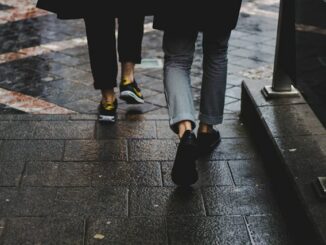
The world can change in a split second. One moment, you’re walking down the street, lost in thought or conversation, and the next, you’re sprawled on the ground, pain radiating through your body. This was my reality when I became a victim of a trip and fall accident in Ontario. The experience was disorienting, painful, and filled with unexpected complexities.
The incident happened on a seemingly ordinary day. I was strolling through a local park, enjoying the sunshine and greenery, when my foot caught on an uneven patch of pavement. I stumbled forward, unable to regain my balance, and landed hard on my outstretched arm. The resulting injuries were severe, requiring extensive medical treatment and a long recovery period.
In the aftermath of the accident, I was overwhelmed by a multitude of questions. What were my legal rights? Who was responsible for my injuries? How could I navigate the complex legal system to seek compensation for my losses? Through my own research and consultations with legal professionals, I learned that trip and fall accidents are a surprisingly common occurrence in Ontario, with a wide range of potential causes and legal implications.
Common Culprits: The Hidden Hazards of Trip and Fall Accidents
Trip and fall accidents can occur in a variety of settings, from public sidewalks and parks to private businesses and residential properties. The causes are just as varied, ranging from poorly maintained infrastructure to unexpected obstacles and slippery surfaces. Some common hazards that can lead to trip and fall accidents include:
- Uneven or damaged pavement: Cracked sidewalks, potholes, and raised or sunken areas can easily catch a pedestrian’s foot and cause them to trip.
- Obstacles in walkways: Objects left in walkways, such as boxes, cords, or debris, can present a tripping hazard, especially in dimly lit areas.
- Poor lighting: Inadequate lighting can make it difficult to see hazards in walkways, increasing the risk of trip and fall accidents.
- Inadequate handrails: Stairs and ramps without proper handrails can make it difficult to maintain balance, especially for elderly or disabled individuals.
Who’s to Blame? Determining Liability in Trip and Fall Cases
Determining liability in a trip and fall accident can be a complex process. In Ontario, the Occupiers’ Liability Act outlines the responsibilities of property owners and occupiers to ensure the safety of individuals on their premises. Generally, they are required to take reasonable steps to prevent hazards and warn visitors of any potential dangers.
If you are injured in a trip and fall accident, several factors will be considered to determine liability, including:
- The nature of the hazard: Was the hazard obvious and could it have been reasonably avoided?
- The property owner’s knowledge of the hazard: Did the owner or occupier know about the hazard and fail to address it?
- Your own actions: Did you act reasonably and cautiously when walking on the property?
If it is determined that the property owner or occupier was negligent in maintaining their property and that this negligence contributed to your accident, they may be held liable for your injuries. This could entitle you to compensation for medical expenses, lost wages, pain and suffering, and other damages.
Navigating the legal system after a trip and fall accident can be daunting, but it’s important to remember that you have rights. Seeking legal advice from a qualified personal injury lawyer can help you understand your options and pursue the compensation you deserve.
My experience as a trip and fall victim was a difficult one, but it taught me the importance of vigilance, awareness, and understanding my legal rights. If you find yourself in a similar situation, know that you are not alone. With the right information and support, you can navigate the complexities of the legal system and seek justice for your injuries.



